Sicarius
Six-eyed sand spiders
Greta Binford


This tree diagram shows the relationships between several groups of organisms.
The root of the current tree connects the organisms featured in this tree to their containing group and the rest of the Tree of Life. The basal branching point in the tree represents the ancestor of the other groups in the tree. This ancestor diversified over time into several descendent subgroups, which are represented as internal nodes and terminal taxa to the right.

You can click on the root to travel down the Tree of Life all the way to the root of all Life, and you can click on the names of descendent subgroups to travel up the Tree of Life all the way to individual species.
For more information on ToL tree formatting, please see Interpreting the Tree or Classification. To learn more about phylogenetic trees, please visit our Phylogenetic Biology pages.
close boxNatural History
Sicarius are ground-dwelling species and occur in dry forests and deserts throughout Southern Africa, South America and Central America. They do not spin webs as retreats or for prey capture. Instead, they bury themselves in a layer of soil where they live and wait to ambush prey. During self-burial, soil particles adhere to the thousands of tiny, specialized setae (hairs) covering their bodies and cover the spider, transforming it's natural coloration to the color of the environment. Sand-covering is thought to be a form of camouflage for these spiders.

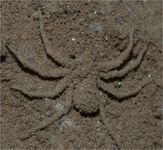
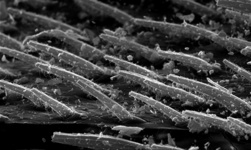
Left: A Sicarius in the field in Argentina, covered in sand. © 2004 Greta Binford. Right: Thousands of microscopic setae, or hairs, cover Sicarius. © 2005 Greta Binford.
The setae covering Sicarius possess long, nanometers thin "hairlettes" protruding from them that have been observed to adhere directly to particles under a scanning electron microscope. Mathematical models suggest that particles of the size range that stick to Sicarius are able to adhere to hairlettes via weak molecular forces, such as van Der Waals. Hairlettes are thought to be an adaptation conferring sand adhesion in Sicarius since an identical setal morphology has evolved independently in the Entelegyne spider genus Homalonychus, which also cover their bodies in dry soil particles, and particles fail to adhere as densely to the bodies of related genera that lack hairlettes.
References
Binford, G.J., Callahan, M.S., Bodner, M.R., Rynerson, M.R., Berea Núñez, P., Ellison, C.E., Duncan, R.P. 2008. Phylogenetic relationships of Loxosceles and Sicarius spiders are consistent with Western Gondwanan vicariance. Molecular Phylogenetics and Evolution 49:538-553.
Duncan, R.P., Autumn, K., Binford, G.J., 2007. Convergent setal morphology in sandcovering spiders suggests a design principle for particle capture. Proceedings of the Royal Society B: Biological Sciences 274 (1629), 3049–3056.
Information on the Internet
- Six-eyed sand spider lunges for lunch. Oregon Public Broadcasting video footage of Sicarius burying themselves in sand and catching prey.
Title Illustrations

| Scientific Name | Sicarius terrosus |
|---|---|
| Location | Parque Sierra de las Quijadas, Argentina |
| Creator | Dr. Kenneth Cramer |
| Specimen Condition | Live Specimen |
| Image Use |
 This media file is licensed under the Creative Commons Attribution-NonCommercial License - Version 3.0. This media file is licensed under the Creative Commons Attribution-NonCommercial License - Version 3.0.
|
| Copyright | © 2005 Dr. Ken Cramer |
| Scientific Name | Sicarius albospinosus |
|---|---|
| Creator | Dr. Kenneth Cramer |
| Specimen Condition | Live Specimen |
| Image Use |
 This media file is licensed under the Creative Commons Attribution-NonCommercial License - Version 3.0. This media file is licensed under the Creative Commons Attribution-NonCommercial License - Version 3.0.
|
| Copyright | © 2005 Dr. Ken Cramer |
About This Page
Greta Binford

Lewis & Clark College, Portland, Oregon, USA
Correspondence regarding this page should be directed to Greta Binford at
binford@lclark.edu
Page copyright © 2009 Greta Binford
All Rights Reserved.
- First online 18 February 2009
- Content changed 24 February 2009
Citing this page:
Binford, Greta. 2009. Sicarius. Six-eyed sand spiders. Version 24 February 2009 (under construction). http://tolweb.org/Sicarius/129538/2009.02.24 in The Tree of Life Web Project, http://tolweb.org/




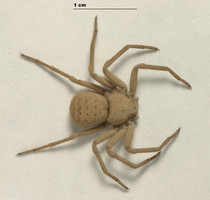
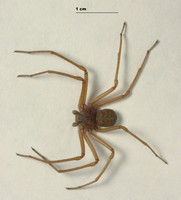
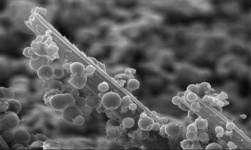
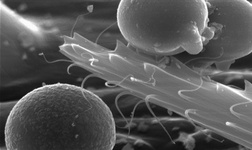
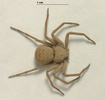


 Go to quick links
Go to quick search
Go to navigation for this section of the ToL site
Go to detailed links for the ToL site
Go to quick links
Go to quick search
Go to navigation for this section of the ToL site
Go to detailed links for the ToL site